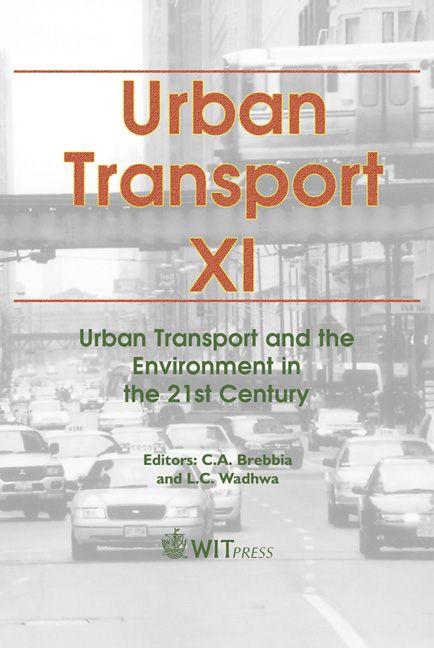A Sustainable Transport Structure As A Problem Of Choosing Intelligent Indicators
Price
Free (open access)
Transaction
Volume
77
Pages
9
Published
2005
Size
646 kb
Paper DOI
10.2495/UT050311
Copyright
WIT Press
Author(s)
T. Macoun
Abstract
The current approaches to city and regional planning state that there is a need to accelerate travel speed between functions at a local level, as well as within regions, or even continents, to gain advantages from free competition. This assumption, however, leads to a separation of functions and the spreading of settlements followed by considerable negative effects on ecological and social aspects. The raising of speed in the transport system therefore should be more sophisticated, since at the local level accessibility is the main indicator to describe mobility. Mobility is defined by the number of trips per day, independent of the modes of transport used, i.e. also walking. Defined in this way, mobility is rather a constant because of limited purposes of trips. However, there are two possibilities to reach a \“mobile” society. On the one hand we can attempt to increase velocity to reach destinations even far away (which is not sustainable because the short term effects of reducing travel time are compensated by a lot of feedbacks within short periods as well as long term changes of settlement patterns). The alternative approach is to keep the destinations of necessary trips to a short distance, and only by that, can the operation possibilities of alternative modes of transport be optimized. Within a complex system, built by a lot of feed back loops, the human ability to perceive such system effects is overstrained. Therefore it is useful to orientate on proved ecological principles. In analysing complex systems, we have to bear in mind that human beings are preconditioned to assess directly effective local factors which are consciously perceived by the individual (e.g. time savings, noise, safety) as rather high. On the other hand, indirect effective indicators (such as energy, flora and fauna, waste of space) which are perceived unconsciously are rated very low. The effect of this weighting problem can be demonstrated on simulations of assessment procedures. Keywords: MCA- multi criteria analysis, key-indicators, sustainability, mobility constants, human ability of perception.
Keywords
MCA- multi criteria analysis, key-indicators, sustainability, mobility constants, human ability of perception.





